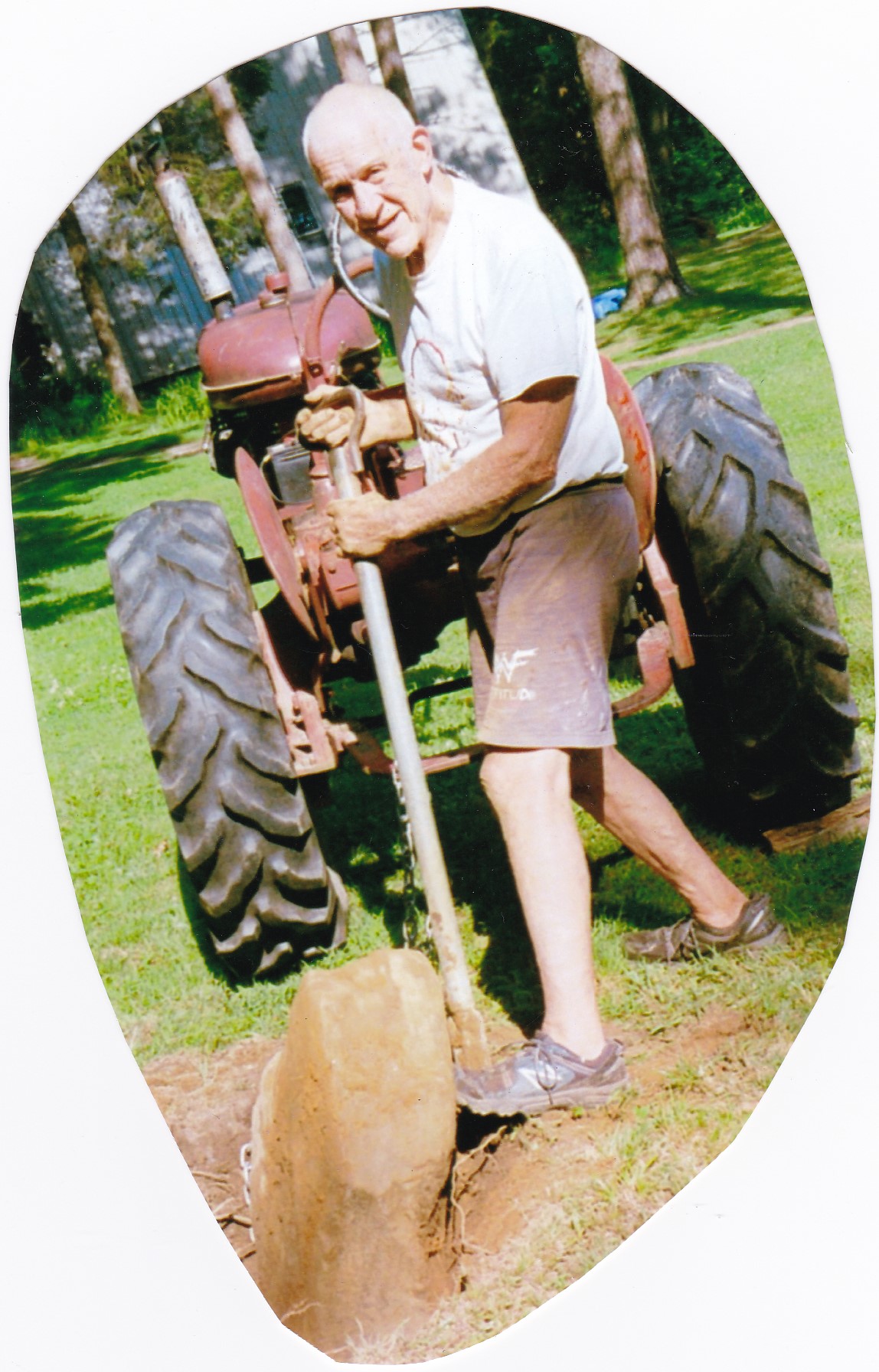
Big potatoes and other garden oddities
By Hobie Morris
” A sluggard does not plow in season, so at harvest time he looks but finds nothing.” Prov. 20:4
Englishman Peter Glazebrook is a celebrated gardener—in a very big way! in 2011 he grew an onion weighing almost 18 lbs. with a circumference of 30 inches. It took Peter’s two strong arms to raise it over his head. Glazebook also holds records for the heaviest potatoes, parsnip and longest beet root. (Author)
Rural Brookfield is widely known for being an area of extremes. The weather, for example, being at the top for most “locals.” This year has been especially cool and damp, putting a damper on many outdoor activities. The weather’s unpredictability has been especially stressful for our local farmers.
Corn planted in late spring—sometimes several times—will be well below the post-winter farmer’s optimism and needs. The late August hay crop has greatly reduced crop protein compared to hay cut in June. For this simple country man farming is a constant “crap shoot,” (obvious pun not intended).
Sadly, very few farmers remain.
Once upon a time the township’s numerous upland hills and valleys contained many generational family farms. Vacant land was a rarity. The original forested hills had been cleared. The new fields plowed and the numerous stones dug up and piled, often carefully placed in long, majestic stone walls. Many hands joined in making these fence, dirt roads and boundary lines.
The farms were generally small, virtually self sufficient, with small dairies. Any extra milk usually sold to a nearby “cheese factory.” Family food was grown in well tended gardens. Before electricity, food was stored in a variety of ways. “Root cellars,” for example, were cooled bt the earth’s 50 degree temperature, preserving the essential winter eating “in cold storage.”
In those years gardens were a necessity for farmers and most Americans. Today farmers seldom have the time to grow their own gardens. They grow food for their livestock, nation and world, but ironically would starve if it weren’t for the nearby Price Chopper, Hannaford, Aldi or WalMart.
Driving through the Brookfield Hills, it’s hard to imagine that this hard scrabble land, best known for its many “rocks of ages” was at one time a proverbial garden of Eden. It wasn’t easy, of course, especially with the highly unpredictable weather. A successful Boston area pumpkin grower tried his luck in the Brookfield hills. No luck. After five years of disheartening and demoralizing failures he went to selling a more reliable crop—firewood.
Successful gardening has always taken considerable time, plenty of physical effort and many months of daily toil. Failing in just one of the above usually produced a bountiful weed crop in September.
Before World War II, the local Fair was a time-honored place to claim garden growers’ bragging rights. Garden growers vied with each other to grow the biggest and tastiest produce that was judged at these fairs. The competitive jui ces were at the highest around Labor Day. (On Labor Day, 1943, the Brookfield Home of the Madison County Fair saw an estimated 25,000 people.)
Amazingly, the Brookfield soil, conservatively containing mostly rock, clay and shale, often produced many blue ribbons. A blue ribbon gave you undisputed bragging rights for at least a year in the local post office, general store, tavern and community newspaper. It was all in good humor but with an undercurrent of serious competition among the “ Townies” and local “Hay Seeds.”
This simple country man had an unofficial bragging right some years ago, with a huge parsnip with a 19-inch circumference at its top and a 19-inch length. With a smile, he likes to tell people he had to put a rope around it to pull it out of the ground.
In the late 19th and early 20th centuries, this land grew, with a lot of hard work, a lot of amazing crops. In 1909, Fred Gustin raised on his 17’x 40’ plot 21 bushels of carrots, one weighing 4 pounds. Al Cook, the same year, raised a turnip over 12” in diameter, which weighed 20 pounds. In 1910 Ray Clark grew a cabbage 40” around that tipped the scale at 18 lbs. Jared York grew a 4 ½ lb. potato (in recent times a farmer in Milo, Maine, dug up a potato containing a gold watch. (And who says you can’t make money farming?)
Walton Denison had a single potato hill with 29 potatoes. Will Chesebro husked 104 bushels of corn on 5/6 of an acre. (One unverified story tells of a local farmer with a field of corn that grew so rapidly one warm evening that it pulled itself up by the roots and the whole field committed suicide, to the farmer’s great loss.)
In 1915 Department J “Farm Produce” contained a staggering 193 different classes. It was considered the largest and best ever seen at the fair. In 1893—the same year as the Chicago World Fair, a local newspaper observed “the exhibit of agricultural products was immense, and a Brookfield section inserted in the Agricultural Building at Chicago would not suffer by comparison.
While rural America may never return to the glory days of necessary gardening, we can only hope that some people will continue to grow their own food and buy locally. New seed catalogs will be out around the first of the year. Growing food will help you in many valuable ways as well as Mother Earth.
Hobie Morris is a Brookfield resident and simple country man.

